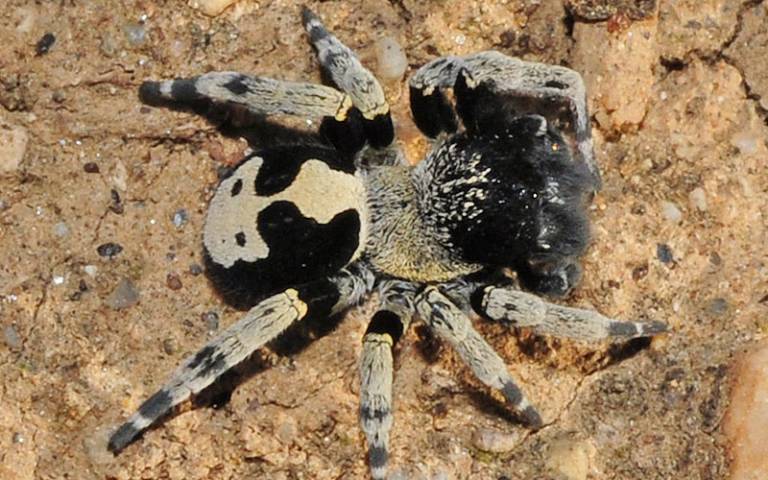New spider named after UCL scientist Dr Ben Collen
24 January 2019
A newly discovered species of spider, Loureedia colleni, has been named in honour of Dr Ben Collen, an internationally recognised conservation scientist and founder member of the UCL Centre for Biodiversity & Environment Research.

Dr Collen, who died in 2018, was at the forefront of developing science-based indicators to track the precipitous loss of biodiversity around the world and had a major impact on global conservation policies.
The velvety spider found in south-eastern Spain was formally named in a study published this week in Revista Ibérica de Aracnología by a team of international scientists led by PhD student Sérgio Henriques (UCL CBER and the Zoological Society of London's Institute of Zoology).
Sérgio, who worked with Dr Collen on pioneering research into understanding recent trends in wildlife populations across the world, said: “Naming the spider is a small way we can recognise the significant contribution Ben made in biodiversity and conservation science.
“The species is only currently found in Spain, and although it hasn’t yet been assessed as endangered, it is threatened by climate change and habitat loss – two key research areas Dr Collen worked on.”
The tiny spider belongs to the genus Loureedia, named after the singer and former lead guitarist of The Velvet Underground because it has a furry body and lives in burrows below ground.
“The Loureedia genus is known from Africa and the Middle East, but this is the first time that the genus has been found in Europe,” explained Sérgio.
“Loureedia colleni is the only species from the group that is black and white. So while other species have a bright red colouration, this one is more discreet to the human eye but we’re not sure if predators see them in the same way.”
By using the Natural History Museum's extensive collection of arachnids, Sérgio was able to confirm that L. colleni is a new species and through studying its behaviour, scientists now understand more about other Loureedia spiders found in Africa and the Middle East.
One of the biggest threats to the new species is the development of southern coast of Spain for agricultural purposes.
Despite being one of the hottest and driest regions in Europe, the greenhouses near Almeria cover an area of roughly 350 square kilometres and are thought to supply over half of Europe's demand for fresh fruit and vegetables.
“There is a massive area that has been completely devastated,” said Sérgio. “The spiders are found around the margins of the large greenhouse cluster so probably did live there, but all that is now lost.”
The other major factor is climate change. The spider already lives in temperatures that are at the threshold of what they can tolerate heat-wise. If the climate warms even just a little, some will likely die. If heatwaves occur more frequently, Sérgio expects they could have very serious consequences for many populations of the arachnids in southern Spain.
Links
- Research paper in Revista Ibérica de Aracnología
- Story on Loureedia colleni by Josh Davis, Natural History Museum
- Dr Ben Collen's memorial page
- Visit the fundraising page set by Ben's family
- UCL Centre for Biodiversity & Environment Research
- UCL Genetics, Evolution & Environment
- UCL Life Sciences
Image
- Loureedia colleni (credit: Faluke)
Media contact
Bex Caygill
Tel: +44 (0)20 3108 3846
Email: r.caygill [at] ucl.ac.uk
 Close
Close

